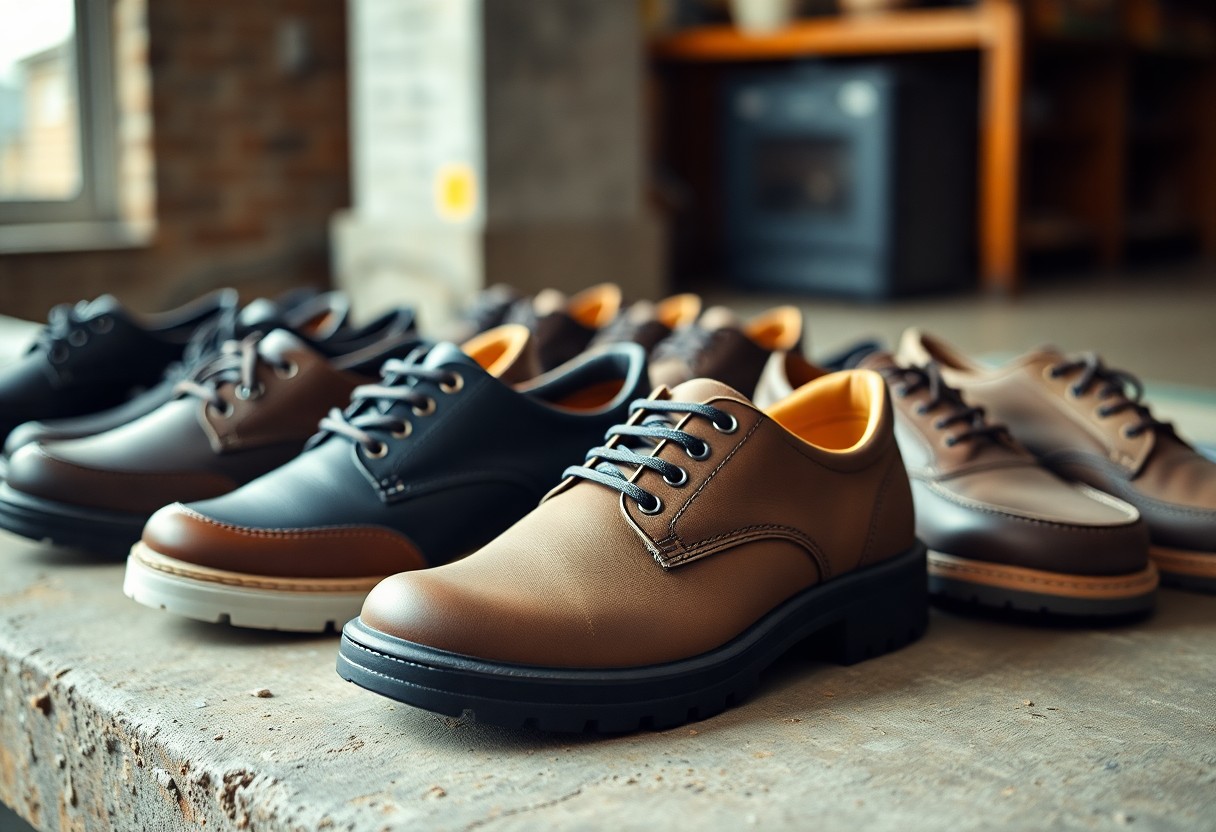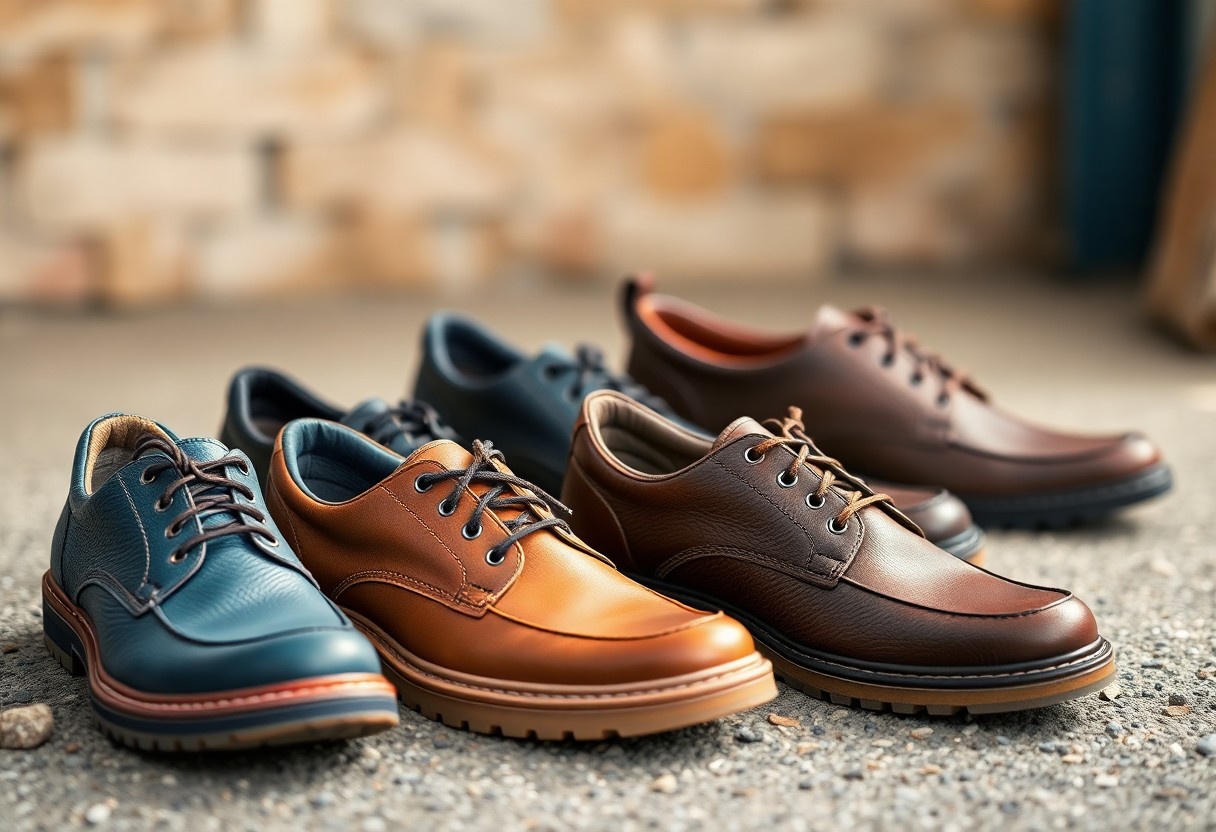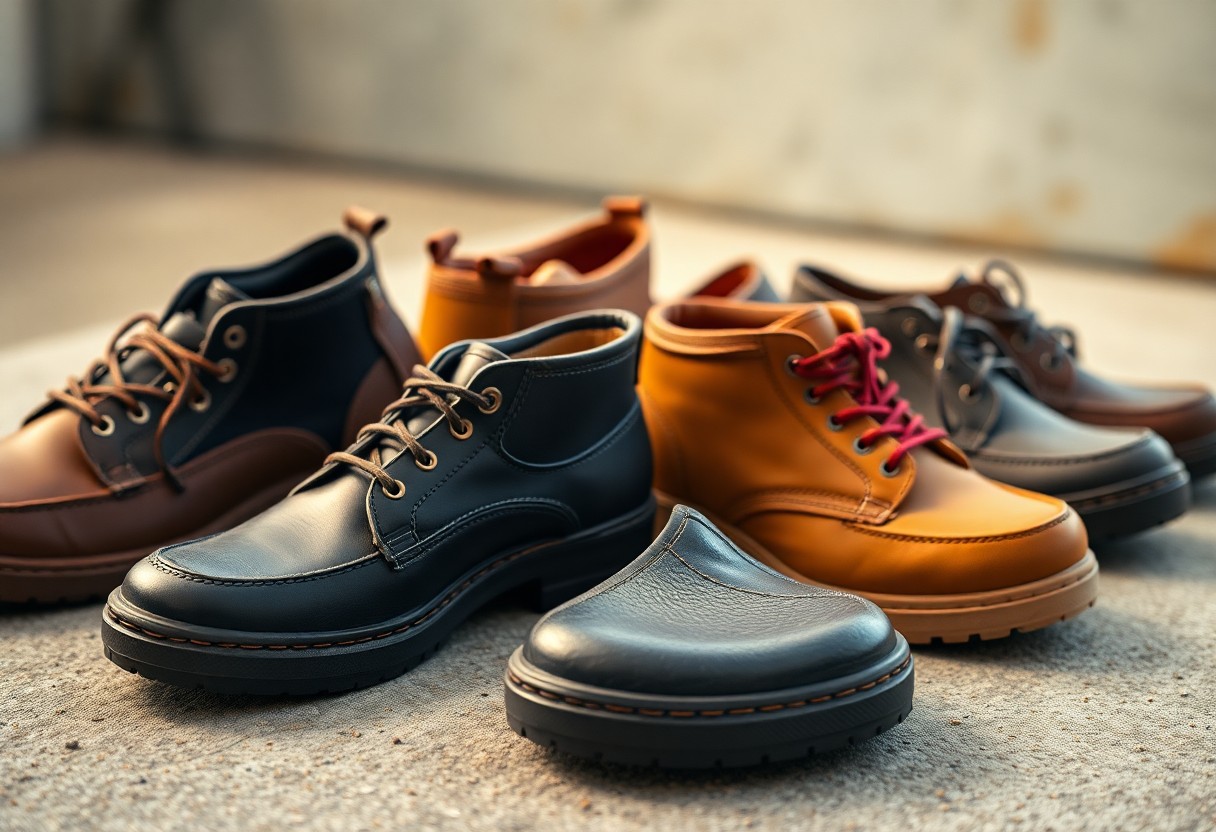Finding the ideal pair of comfortable work shoes for wide feet can feel overwhelming, yet ensuring your foot health and comfort is crucial for maintaining productivity during long workdays. It’s vital to select shoes that not only accommodate the width of your feet but also provide essential support while maintaining a polished appearance. Gaining insight into shoe construction and fitting can greatly ease your quest for the perfect work footwear. This extensive guide is designed to help you learn how to choose work shoes that alleviate foot pain, reduce swelling, and minimize the risk of long-term foot issues while ensuring you meet professional standards in your workplace.
Master the Art of Measuring Your Wide Feet for Perfect Fit
To achieve the perfect fit, accurately measuring both the length and width of your feet is essential. It’s important to understand that your feet may vary in width throughout the day; factors like standing or walking can cause your feet to swell by as much as 15%. By mastering these measurements, you can select shoes that provide the necessary support to prevent discomfort and enhance your overall well-being during long hours on your feet.
Discover the Advantages of Professional Foot Measurement for Precision Fit
Opting for professional measurement provides significant benefits in terms of precision and accuracy. You will receive detailed insights about your foot’s exact dimensions, arch type, and pressure points, ensuring a tailor-made fit. Specialized measuring tools can detect subtle differences between your left and right foot, a variation present in 60% of individuals, which allows you to make informed and effective shoe choices tailored to your unique foot structure.
Gain Clarity on Shoe Width Classifications for the Perfect Fit
Understanding the various shoe width classifications is crucial for identifying the best fit for your feet. Standard width measurements range from AA (narrow) to EE+ (extra wide). It’s vital to recognize that different brands may require varying widths, as size standards can differ among manufacturers, affecting your comfort and fit.
A comprehensive width chart typically includes six primary categories: Narrow (AA), Medium (B), Wide (D), Extra Wide (E), Extra Extra Wide (EE), and Extra Extra Extra Wide (EEE). Each increment in width generally corresponds to about a 1/4 inch difference. Being aware of your precise width classification can significantly reduce the chances of developing foot ailments such as bunions, corns, or blisters, allowing you to maintain foot health.

Identify Key Features in Wide Work Shoes for Enhanced Comfort
Even those with wide feet need work shoes that deliver optimal comfort and support throughout long hours of wear. Your work footwear should seamlessly integrate width accommodation with essential features such as arch support, cushioning, and durability. Research indicates that 72% of individuals wear incorrectly sized shoes, which can lead to a range of foot complications, making the choice of proper footwear even more critical.
Selecting Breathable and Flexible Materials for Maximum Comfort
When selecting work shoes, it’s essential to focus on options constructed from breathable and flexible materials. The best choices often include full-grain leather, mesh panels, and stretchy synthetic fabrics that adapt to your foot shape. Avoid rigid materials that may limit natural foot movement and create pressure points, leading to discomfort and potential injuries over time.
Essential Construction Features for Maximum Comfort and Stability
In addition to width considerations, your work shoes should incorporate specific construction features to ensure comfort and stability. Look for shoes with deep toe boxes, padded collars, and removable insoles that allow your feet the space they need to move naturally while maintaining support and stability during your activities.
Elements such as reinforced stitching and high-quality outsoles enhance the longevity of your shoes. Additionally, seamless interior construction helps prevent friction points, and moisture-wicking linings keep your feet dry and comfortable throughout long work hours, which is essential for maintaining foot health.
Recognizing Essential Support Structures for All-Day Comfort
To combat the daily stressors of work, your shoes must provide adequate support structures. This includes essential arch support, heel stabilization, and effective shock absorption. Studies show that 80% of workers who have proper foot support report experiencing less fatigue, which can significantly impact overall productivity and well-being.
Construction features such as contoured footbeds and ergonomic midsoles help distribute pressure evenly across your feet. Your shoes should also include cushioning systems that effectively absorb impact while providing stability throughout your workday, ensuring your feet remain comfortable even during the most demanding tasks.
Explore Various Types of Work Shoes Tailored for Wide Feet
Not all work shoes are created equal, especially when considering wide feet comfort and support requirements. Your choice will largely depend on your work environment, but here are the primary categories you should consider for wide-fit footwear that meets your specific needs.
| Shoe Type | Best For |
| Oxford Shoes | Office Environment |
| Steel-Toe Boots | Construction Sites |
| Slip-Resistant Shoes | Food Service |
| Athletic Work Shoes | Healthcare |
| Composite Toe Boots | Light Industry |
Selecting Professional Office Shoes for Style and Comfort
In professional office settings, it’s essential to wear formal footwear that balances style with comfort. You can find wide-width dress shoes featuring critical elements such as cushioned insoles and breathable materials. Many reputable brands now offer extended sizes that go up to 4E width, providing you with more options in formal footwear that doesn’t sacrifice comfort for style.
Prioritizing Safety Features in Industrial Work Boots
When working in industrial settings, your safety should always be the top priority. Industrial work boots are specifically designed with protective toe caps, slip-resistant soles, and waterproof features to ensure your safety in potentially hazardous environments.
The market for industrial boots includes models specifically tailored for wide feet, with height options ranging from 6-inch to 8-inch and widths extending to 4E or 6E, catering to various professional needs.
Ensuring Comfort and Safety in Service Industry Footwear
In the service industry, prioritizing comfort and safety is vital for managing long shifts on your feet. These shoes are crafted with slip-resistant soles and shock-absorbing insoles to enhance comfort and minimize fatigue, ensuring you can perform effectively throughout your workday.
Office workers in service roles require shoes that can withstand 8-12 hour shifts. Your footwear should provide sufficient arch support and incorporate moisture-wicking properties to keep your feet dry and comfortable during lengthy hours of work, further enhancing your productivity.

Ensure Proper Fitting and Testing for Ultimate Comfort
Many individuals with wide feet often make the mistake of purchasing work shoes without adequate fitting and testing. Since your feet can fluctuate in size throughout the day due to swelling, it’s advisable to try on shoes in the afternoon when your feet are at their largest. This practice ensures that your work shoes will remain comfortable even during long shifts, preventing discomfort and potential foot issues.
Essential In-Store Trial Tips for an Accurate Fit
Once you’ve selected potential shoes, follow these essential steps to ensure the perfect fit:
- Wear your usual work socks while trying on shoes to replicate your typical wearing conditions
- Test each shoe on both feet, as sizes may vary between them
- Walk on various surfaces in the store to gauge overall comfort
- Ensure there’s toe wiggle room (approximately 1/2 inch) to prevent cramping during use
- Stand and walk for a minimum of 5 minutes to assess long-term comfort
This thorough testing process is crucial in preventing costly purchasing mistakes and ensuring your footwear meets your needs.
Guidelines for a Successful Break-in Period of New Shoes
Approximately 80% of work shoes necessitate a proper break-in period of 1-2 weeks. Start by wearing your new shoes for 2-3 hours each day, gradually increasing the duration. Pay close attention to any pressure points or discomfort during this process, as it can help you identify any potential issues before they escalate.
To minimize the risk of blisters and discomfort while breaking in your new shoes, consider the following suggestions:
- Utilize protective padding on sensitive pressure points to shield your feet during the transition
- Alternate between new and old shoes to give your feet time to adjust
- Cease wearing the new shoes if you experience severe pain to avoid injury
- Apply leather conditioner to facilitate faster softening of materials

Top Brands Offering Comfortable Wide-Fit Work Shoes
Your search for the best comfortable work shoes can be simplified when you know which brands consistently offer quality wide-fit options. Ranging from traditional shoemakers to innovative manufacturers, these companies have established reliable sizing standards and provide multiple width options to ensure you find your ideal fit, enhancing your comfort and support.
Quality Offerings from Established Shoe Manufacturers
Brands such as Allen Edmonds, Red Wing, and Clarks have developed a strong reputation for delivering quality footwear that includes inclusive sizing. These manufacturers offer up to 4E width options in their work shoes, making them a trusted choice for individuals with wide feet. Their products typically feature premium materials and construction techniques that promote natural foot movement, ensuring comfort during long hours of wear.
Specialty Brands Focused on Wide-Fit Comfort
At New Balance Work, Orthofeet, and Drew Shoe, you’ll uncover collections specifically designed for those with wide feet. These brands emphasize a comfort-first design, incorporating features such as extra depth, removable insoles, and stretch materials to accommodate your foot width while ensuring optimal support.
Brands in this category prioritize your foot health with ergonomic designs and supportive features. Their offerings often include memory foam cushioning, arch support, and breathable materials. The size ranges typically start at D width and extend to 6E in select styles, providing you with a broader selection for your work footwear needs.
Practical Maintenance Tips for Shoe Longevity
Regular care is essential for your work shoes to maintain their shape and comfort level over time. Clean your shoes using appropriate products, prioritizing leather conditioning for natural materials while opting for gentle cleaning methods for synthetic options. Pay special attention to the insoles and arch support areas, replacing them when necessary. Adopting the right maintenance routine can extend your shoes’ lifespan by as much as 40%, saving you money in the long run.
Strategies for Preserving the Shape of Your Shoes
Throughout your workweek, your wide-fit shoes can lose their structure if not cared for properly. Consider using shoe trees when the shoes are not in use to help maintain their form and absorb moisture. Allow your shoes to rest for 24 hours between wears to prevent material breakdown. Implementing these simple steps can help your shoes retain their supportive structure and prolong their life.
Essential Practices to Ensure Longevity of Work Shoes
To maximize the lifespan of your shoes, integrate these vital care practices into your routine:
- Rotate between 2-3 pairs of work shoes to allow each pair to recover
- Apply water-repellent sprays for added protection against the elements
- Clean and polish regularly to maintain appearance and prevent deterioration
- Store shoes in a cool, dry environment to prevent mold and other damage
- Promptly replace worn soles to ensure safety and comfort during use
Keep in mind that proper maintenance can effectively double the lifespan of your shoes. Apply leather conditioner every 3-4 months to prevent cracking. Regularly check stitching for any loose threads and address them before they escalate into larger issues. Your investment in quality work shoes deserves careful protection through consistent maintenance practices.
Empowering Your Choice of Comfortable Wide Work Shoes
By keeping these considerations and tips in mind, you can confidently find comfortable work shoes that provide the necessary support for your wide feet. Your choice of footwear directly impacts your daily comfort and long-term foot health. By accurately measuring your feet, thoroughly testing shoes before purchasing, opting for laced styles, and selecting soft materials, you can make informed decisions about your work footwear. If standard options do not meet your needs, consider exploring custom-made shoes that cater specifically to your requirements. Following these steps will help you discover work shoes that fit well and keep your feet comfortable throughout your workday.
Your Questions Answered: Commonly Asked Questions
What Key Features Should I Look for in Work Shoes for Wide Feet?
The ideal work shoes for wide feet should possess three main features: a wide toe box that allows your toes to spread naturally, adjustable closures like laces for a customized fit, and soft, flexible materials such as leather that adapt to your foot shape. These essential features can significantly reduce pinching and discomfort during long working hours. Additionally, the shoes should offer excellent arch support and cushioning to promote proper foot alignment and overall comfort.
How Can I Ensure I Get the Correct Size for Work Shoes for Wide Feet?
Start by measuring both feet at the end of the day when they are at their largest. Utilize a Brannock device at a shoe store for accurate width and length measurements. Try on the shoes and walk around for several minutes to assess comfort. Your toes should have ample space to move freely, and the widest part of your foot should not feel constricted. Choose shoes that feel comfortable immediately; do not rely on them stretching significantly after purchase, as this can lead to discomfort and foot health issues.
Which Brands Are Renowned for Producing the Best Work Shoes for Wide Feet?
New Balance is widely recognized for offering work shoes available in a variety of width options from D to 4E. Brooks designs work-appropriate shoes featuring wide toe boxes and exceptional support. Altra specializes in shoes designed with a natural foot shape and wide toe area, effectively catering to foot health. These brands prioritize comfort and proper fit specifically for individuals with wide feet. Look for styles labeled as “Wide” or “Extra Wide” and check user reviews from individuals with similar foot shapes for further insight into their performance.
The Article Finding the best work shoes for wide feet tips and top recommendations appeared first on My Shoes Finder
The Article Best Work Shoes for Wide Feet: Tips and Top Picks Was Found On https://limitsofstrategy.com


One response
This really hits home for me! I’ve struggled with finding the right work shoes ever since I started my job in retail. It’s a long day on my feet, and I can’t tell you how many pairs of shoes I’ve regretfully bought only to end up with sore feet by noon. I’ve learned the hard way that measuring my feet right before shopping is key—especially considering how much they swell during the day.